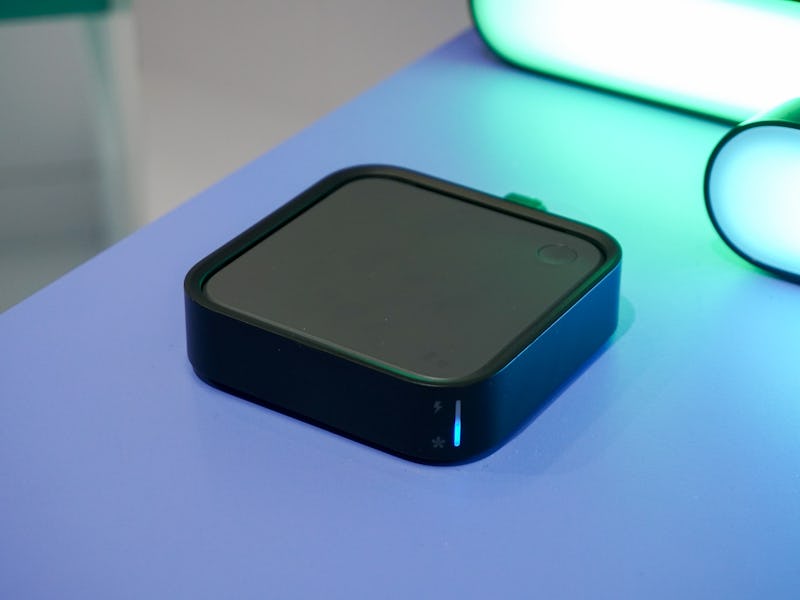Samsung’s 2-in-1 wireless charger and smart hub are a perfect marriage
The $60 wireless charger doubles as a smart home hub — it’s kind of a genius idea.

Easily the biggest pain point to a smart home is setting it up. Weighing the pros and cons of each platform; deciphering the various different IoT protocols; setting up a smart hub to connect all your connected devices to and positioning it in a place to reach them. It’s work. A lot of work. Samsung is making the smart hub part even easier by putting it inside of a wireless charger.
Debuting at CES 2023, Samsung’s SmartThings Station is exactly what it looks like: a SmartThings smart home hub stuffed inside of a 15W wireless charger. If you stop and think about the product, it actually makes a lot of sense.
Smart hubs are usually little boxes plugged into routers, tucked away in a corner somewhere. While that hides them from plain sight in a room, it often limits the range of connected smart home devices. The SmartThings Station sits out in the open, blasting low-power wireless protocols including Matter. Range issues are less of a problem with this solution. And since the SmartThings Station looks like an unassuming wireless charger, it’s less likely to clash with your room furniture.
There’s a button for programming three functions.
The cherry on top is the affordable price: $59.99 when it launches in the U.S. and Korea in February 2023. That’s practically the same price as a typical wireless charger without a smart hub integrated inside.
What is a smart home in 2023? — That’s the question I posed to Jaeyeon Jung, Executive Vice President and Head of SmartThings, Device Platform Center at Samsung Electronics, in an overview of the SmartThings Station.
When the modern smart home debuted several years ago, the general idea of a smart home consisted of smart lights and smart plugs that you can control with a phone, smartwatch, or voice assistant via a smart speaker. And in many ways, that image of a smart home never changed; it’s still what comes to mind when people try to explain it.
Jung tells me Samsung is thinking of the next phase of the smart home — the driving reasons to create and invest in one — is more about improving your lifestyle.
“For a while, we really focused on interoperability because that was a real dealbreaker,” Jung says. “It was really hard to do anything useful with smart devices, but now that problem is behind us with Matter and Home Connectivity Alliance.”
The Samsung SmartThings Station also is a wireless charger.
Jung brought up a few examples of this shift in the smart home vision. For example, instead of just thinking of a smart home as an intelligent or automated on/off switch for your devices, maybe you’re more concerned about your pet at home while you’re out. This human element is what drove Samsung to build support for SmartThings pet monitoring via a connected camera into its 2023 TVs. “You can add a camera [to a Samsung TV] and then it can connect to SmartThings and monitor your pet and use the microphone processing on your TV to alert you if your [dog] starts barking or [cat] starts meowing.”
Another example to build a smart home is perhaps you’re an energy-conscious person. With SmartThings and a smart home, you can purchase connected devices that can report back the amount of energy they use, which you can then monitor on an app dashboard. If you see a connected smart home device using up too much energy, you could put it into a low-power mode to reduce its power consumption.
INVERSE brings you everything from the fun and futuristic world of consumer technology at CES 2023. For all the latest technology coverage from the show, go to the INVERSE CES 2023 hub.
This article was originally published on